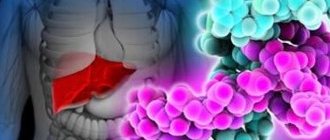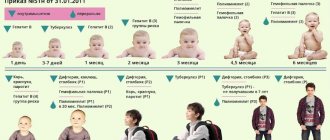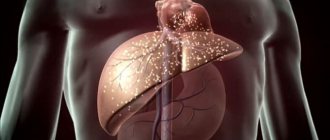According to epidemiological data from the World Health Organization (WHO), as of 2022, there are about 150 million people in the world who have been infected with the hepatitis C virus. Hepatitis C is a dangerous viral liver disease. This virus can cause both acute and chronic forms of hepatitis, which range in severity from a mild illness lasting a few weeks to a serious, lifelong illness. With timely diagnosis and properly selected treatment, this pathology is completely curable, especially if you do not hesitate to take tests to detect hepatitis C in the blood. Otherwise, the consequences can be tragic - hepatitis C often leads to the development of irreversible changes that are potentially life-threatening.
Thanks to the presence of modern medical equipment within its walls, the Yusupov Hospital diagnoses all types of viral hepatitis. At the therapy clinic, each patient will receive not only qualified assistance from specialists of the highest category with many years of experience, but also understanding and support in his difficult struggle with a terrible disease.
Hepatitis C: what a patient needs to know
Hepatitis C is one of the most insidious and deadly viruses. In 90% of cases, they are asymptomatic. Due to its ability to disguise the true cause under the guise of many other diseases, it was nicknamed the “gentle killer.” If the disease does make itself felt, its active phase is divided into two main periods: pre-icteric and icteric. In the first (early) period, symptoms characteristic of viral infections are observed, such as:
- general weakness;
- skin itching;
- digestive disorders: nausea, vomiting, diarrhea;
- increase in body temperature up to 38°C;
- headaches, myalgia, arthralgia.
In the second (icteric) period, when the liver is affected, a large amount of bilirubin, a yellow pigment, is released into the blood. It is thanks to the icteric staining of the patient’s skin that it becomes obvious that he has obvious problems with the liver, and a set of laboratory tests of blood, urine and feces is prescribed.
However, many cases of infection are asymptomatic, without a characteristic clinical picture. After an incubation period, which lasts from a couple of weeks to a couple of months, the patient may not even suspect that he is a carrier of the virus not only in the prodromal (pre-icteric) stage, but also in the icteric stage - due to its absence as such. For example, in 2/3 of all cases, hepatitis C occurs in an atypical (anicteric, or subclinical) form.
Further tactics for patient management
Polymerase chain reaction and enzyme immunoassay results should be evaluated in conjunction with biochemical responses. The doctor is interested in the level of bilirubin (total and fractions), which increases with jaundice. This indicates liver dysfunction and the inability of hepatocytes to completely process it in full.
Attention is also paid to transaminases (ALT, AST), the increasing level of which indicates massive cell death, as a result of which the enzymes come out. During the active phase of the disease, their concentration is maximum, and during the period of remission it can return to normal.
After a complete examination, the doctor prescribes antiviral medications such as Ribavirin and Interferon-alpha. The dosage and duration of the therapeutic course is determined exclusively by a specialist. LadyX.ch Today, new direct-acting medications have been developed that block the activity of the enzyme responsible for the reproduction of pathogens. These include Sofosbuvir and Daclatasvir, the effectiveness of which is 100%, and the number of adverse reactions is minimal.
Thanks to regular laboratory diagnostics, a specialist evaluates the effectiveness of drugs and can draw a conclusion about the course of the disease. Depending on the severity of clinical symptoms and viral load, he adjusts the therapy. It includes:
- hepatoprotectors - necessary to protect liver cells from environmental factors. The composition of drugs is represented by herbal or synthetic components. They also normalize bile flow, prevent stagnation and control the digestive process;
- immunostimulants – to increase the strength of the immune system;
- vitamins;
- detoxification drugs;
- enterosorbents;
- diuretics - to reduce tissue swelling.
Methods for preventing HCV infection include monitoring the sterility of medical instruments, using condoms during intimate intimacy, as well as personal hygiene products when living together with a virus carrier.
Hepatitis C analysis: features and preparation
Blood is always given for biochemical analysis strictly on an empty stomach, immediately in the morning, before noon. This is due to the circadian rhythms in the human body, which affect the content of hormones in the blood. A quantitative test for hepatitis C (antigens and antibodies) is taken at any time of the day, but also, necessarily, on an empty stomach: it is important not to eat for 4-6 hours before blood sampling. In both cases, venous blood is used, which as a biomaterial is of higher quality than capillary or arterial blood.
On the eve of taking any blood tests, it is recommended to avoid excessive physical and psycho-emotional stress, drinking alcohol and heavy food. The drinking regime should be normal.
Treatment of hepatitis B
- The acute form of the disease in adults in most cases ends in recovery. There is no specific treatment for acute hepatitis type B. Only symptomatic therapy aimed at maintaining and protecting liver cells is required. The disease very often becomes chronic in children under 6 years of age, almost always in children of the first year of life. Prevention in the form of vaccinations allows children to reduce the risk of chronic infection.
- Chronic hepatitis of the type Treated with direct antiviral drugs and immunoglobulin. It is almost impossible to completely get rid of this form of the disease, so therapy must be carried out throughout life.
Quantitative and qualitative tests for hepatitis C
This type of hepatitis has six varieties, so tests must be carried out in combination. The risk group includes people taking intravenous drugs (cocaine, heroin), those who are promiscuous, health care workers (especially surgeons and anesthesiologists), as well as patients who are prescribed hemodialysis or blood transfusions.
For preventive purposes or if viral liver damage is suspected, the following qualitative and quantitative tests for hepatitis C are taken:
- Analysis for anti-HCV-total (antibodies to hepatitis C virus antigens). Qualitative analysis. A positive result means infection or a period of recovery from an infection. Negative result - incubation period;
- Determination of RNA (HCV-RNA) in serum or plasma. Can be qualitative or quantitative. In a qualitative analysis, the result “detected” confirms infection with hepatitis C. A negative result indicates the absence of the virus in the patient’s blood;
When quantitatively analyzing blood plasma for hepatitis C:
- “not detected”: hepatitis C RNA was not detected;
- from 15 to 100,000,000 IU/ml: interpreted as “hepatitis C RNA detected”;
- >100,000,000 IU/ml: the result is interpreted as: “Hepatitis C RNA is outside the linear range, the test was performed at a 1:X dilution.”
When quantitatively analyzing blood serum for hepatitis C:
- “not detected”: hepatitis C RNA was not detected;
- from 102 to 108 IU/ml: the result is positive;
- 108 IU/ml: the result is positive, the concentration of hepatitis C RNA is more than 108 IU/ml.
- Determination of IgG antibodies (recomBlot HCV IgG). Qualitative test. A negative result indicates the absence of infection. Positive result means the patient was previously infected. Doubtful result - there may have been an infection.
How to reduce high viremia
When an analysis for the quantitative determination of HCV has been carried out and the test results have been deciphered, doctors decide on the tactics of therapy.
Treatment consists of prescribing the following drugs:
- Direct-acting antiviral drugs (Maviret, sofosbuvir, daclatasvir, Vikeira Pak, velpatasvir, ledipasvir, etc.). They are characterized by high efficiency (85–95% favorable outcomes), safety, and a short list of contraindications.
- Combination of interferon with ribavirin . Currently, it is rarely used due to low effectiveness (compared to the latest generation drugs) and a high risk of contraindications. But they are prescribed if there is intolerance to antiviral drugs or there are other restrictions.
- Hepatoprotectors (Essentiale Forte, Hepa-Merz, Karsil, Legalon, etc.) are prescribed to all patients at the first visit to the doctor regarding complaints about the condition of the liver. Taken over a long period, as a rule, until complete (or maximum possible for a given patient) liver recovery.
- Multivitamin complexes . Also taken in long courses. The preparations must contain B vitamins, antioxidants (vitamins A and E, ascorbic acid), basic macro- and microelements, and essential amino acids.
One of the few ways to reduce the viral load is properly selected comprehensive treatment.
Also, to quickly reduce viremia, you must adhere to a strict diet. During the consultation, the doctor explains in detail the nutritional features in accordance with table No. 5, in case of a serious condition of the patient - No. 5a. Alcohol is strictly contraindicated (regardless of strength and quantity). It is recommended to give up bad habits, especially drug and nicotine addictions.
Interpretation of a blood test for hepatitis C
Deciphering a blood test for hepatitis C and verifying the diagnosis, taking into account the clinical and epidemiological picture, can only be done by a specialist.
If the result is negative, based on the results of all tests performed, no markers of viral hepatitis are found in the blood. Then we can talk about the absence of the disease. However, in some cases, doctors recommend testing again after two weeks.
If the result of the test for hepatitis is positive, a repeat clarifying test is performed after two to three weeks. It is possible that the patient has just recovered from an acute form of viral hepatitis and the markers in the blood are still preserved.
Other types of diagnostics for hepatitis C
The hepatitis C virus primarily affects liver cells, so when it is detected, a full examination of this organ is necessary.
- Virological diagnostics are supplemented by clinical and biochemical indicators (ALT, AST, total and direct bilirubin, GGTP, alkaline phosphatase and others - the list is compiled by the attending physician). This set of tests is taken regularly: before starting, once a month during and for a year after treatment. This is necessary to monitor the condition of the liver and its response to therapy.
- Instrumental diagnostics , primarily involving ultrasound of the abdominal organs with liver elastography. In conclusion, the ultrasound diagnostic doctor describes the shape, size, position, structure of the liver and gallbladder, and using elastography, the stage of liver fibrosis/cirrhosis.
- Additionally, the doctor may prescribe special tests FibroMax or FibroActiTest. This is a comprehensive blood test, also necessary for diagnosing fibrosis, liver steatosis and the activity of destructive processes.
Regardless of whether your symptoms bother you, hepatitis C can be treated . Without treatment, over time the disease can lead to cirrhosis, liver cancer and even death. Severe cirrhosis may require a liver transplant.
At the EXPERT clinic you will receive a full and only necessary examination, detailed consultation with a doctor and assistance at all stages of hepatitis C treatment.
Test for hepatitis C: price, Moscow
The cost of testing for hepatitis C in private clinics in Moscow varies from 500-2000 rubles. A qualitative test for hepatitis C costs an average of 700 rubles. A quantitative PCR test for hepatitis C will cost Moscow residents approximately 2,500 rubles.
The Yusupov Hospital specializes in diagnosing and conducting tests to detect all types of viral hepatitis. The clinic's inpatient facility has its own modern laboratory, whose employees constantly improve their skills and undergo special advanced training courses. The hospital is developing new medicinal methods for treating various types of viral hepatitis, including hepatitis C. Responsibility to each patient and the high level of professionalism of the staff is the hallmark of the Yusupov Hospital. To make an appointment, call by phone.
References
- Ministry of Health of the Russian Federation: Clinical guidelines “Chronic viral hepatitis C (CVHC) in adults” - 2016.
- FSBI NIIDI FMBA RUSSIA, Public organization "Eurasian Society for Infectious Diseases", Public organization "Association of Infectious Disease Doctors of St. Petersburg and the Leningrad Region" (AVISPO): Clinical recommendations (treatment protocol) for the provision of medical care to children with acute viral hepatitis C - St. St. Petersburg, 2015.
- Revie D, Salahuddin SZ. Human cell types important for hepatitis C virus replication in vivo and in vitro: old assertions and current evidence. Virol J 2011 Jul 11;8:346. doi:10.1186/1743-422X-8-346. PMID:21745397
Side effects are possible but easily controlled.
Patients should be aware that the general health of most patients during treatment is somewhat worse than before treatment. This is due to the possibility of developing such side effects as increased temperature (at the beginning of treatment), decreased hemoglobin levels, changes in the state of the nervous system (irritability, insomnia, decreased mood), changes in thyroid function. Appetite decreases and, as a rule, there is a slight weight loss. Less common concerns include dry skin and rashes, dry mucous membranes, and cough. All side effects are monitored by a doctor and are not life-threatening. Some side effects may require additional medications, for example, drugs to regulate the function of the thyroid gland, the nervous system, and to increase hemoglobin levels. All side effects completely disappear in the first weeks after completion of treatment.
Is there an alternative to antiviral treatment?
To date, there is no alternative to antiviral treatment. There are a number of drugs that are offered as alternatives to antiviral treatment, but none of them have been proven to eliminate the virus and cure the disease. Our century is a century of rapidly developing medical technologies. Over the past two decades, dozens of new drugs that have an antiviral effect against various viral infections have been developed and began to be used. New antiviral drugs are also being developed for the treatment of chronic hepatitis C. They will appear, apparently, in a few years. But today we can say with confidence that a diagnosis of hepatitis is not a death or life sentence. The desire of the patient and the professionalism of the doctor today can defeat the disease and return the body to a clear and cloudless sky of health.
Benchmark of treatment effectiveness
Sustained virological response (SVR) is the absence of virus (determined by HCV RNA) 12 and 24 weeks after the end of treatment. The study must be carried out using a sensitive molecular diagnostic method with a lower detection threshold of 15 IU/ml or less.
Long-term follow-up studies have shown that SVR corresponds to definitive cure of hepatitis in 99% of cases.
In patients with cirrhosis and advanced fibrosis, HCV RNA testing should continue after SVR.








